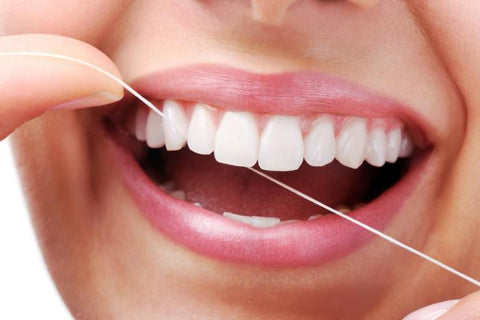
Humans have been treating their mouth related ailments for at least 10,000 years. Some of the earliest evidence of direct intervention of caries includes bow drills and accompanying dental abrasions in the archaeological catalog of the Indus Valley Civilizations dating back to 7,000 BC. Early forms of the toothbrush have been attributed to Chinese civilization back in 3,000 BC. Surely, pieces of string have been used to remove detritus from people’s teeth for as long as string has been around. But invention of modern dental floss occurred much more recently in 1815 by New Orleans dentist Levi Spear Parmly. In his book A Practical Guide to the Management of the Teeth, Parmly described a waxed string he developed to be used as a device to remove harmful debris from between the teeth and gum line as a way to prevent oral disease. It is a simple concept and application, but since its initial inception dental floss has undergone numerous transformations over the years.
Levi Parmly’s promotion of his dental floss caused it to become widely accepted across the field of dentistry. But it took nearly 70 years for it to reach the homes of the everyday consumer. That’s when in 1882 Codman and Shurtlefelt started marketing the first mass available, non-waxed silk string floss. From there it was only a matter of time before dental floss would become the staple of your daily oral care routine it is today.
The silk-based floss remained relatively unchanged until the 1940s and 50s. Dr. Charles C Bass created a floss using nylon instead of silk, for its better elasticity and less fraying. Within the same decade, dental tape came onto the scene offering a more comfortable feel between users’ teeth and greater tooth surface area covered.
Over the years, companies have developed floss and flossing technologies more and more to help accommodate an activity many people agree is not their favorite part of the day. Floss today comes in many variations including waxed and unwaxed, mono- and multi-filaments, threaded and tape styles, various thicknesses, and picks and wands for easier handling. The latest trend that is truly changing the game of cleaning between teeth is the interdental brush. Very thin brushes used to get between teeth are shown to be more efficient at removing plaque than their flossing string counterparts.
Of course, no discussion of reaching tight places between teeth and along gum lines would be complete without mentioning Doctor Plotka’s antimicrobial toothbrushes with flossing bristles! The technology has come full circle where you now have a toothbrush with the unique ability to reach deep between teeth and into grooves to provide a superior cleaning experience. Our brushes are not designed to replace flossing but are the perfect complement, and fill-in where flossing and brushing with the traditional tools fall short.
-Tim Mavroules
Sources:
http://www.historyofdentistry.net/dentistry-history/history-of-dental-floss/
